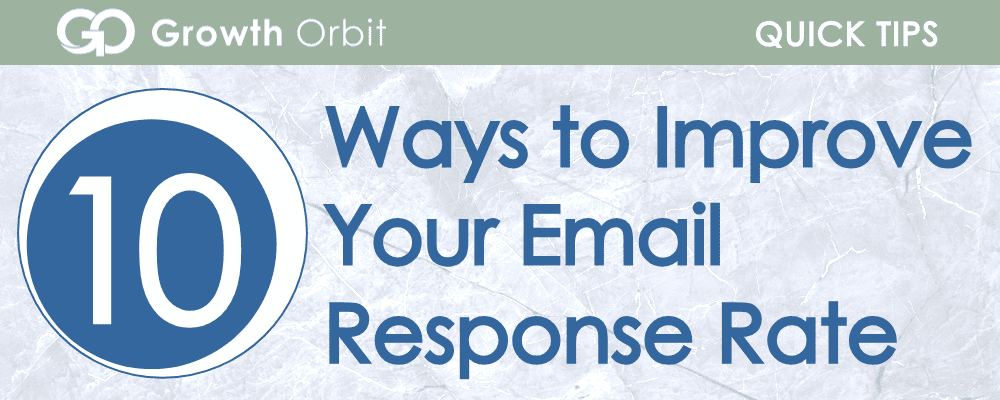Quick Tip: 10 Ways to Improve your Email Response Rate
by Steve Schilling
Email is an essential tool in sales as it allows sales team members to communicate effectively and efficiently with potential customers. Email can be used to reach a large number of potential customers quickly and it allows sales team members to easily track and follow up with leads. Email can also be used to send marketing materials, schedule appointments and provide information about products or services. Additionally, email is an essential tool to nurture leads that are not yet ready to buy. Email campaigns are a great way to deliver messaging to keep the company in the customer’s mind and to provide valuable information that can help to build trust and credibility.
Email is a valuable tool, but what can we do to make it the most effective. Below is 10 ways to improve your email response rate.
1. Use a clear and concise subject line: A subject line that accurately reflects the content of the email and is easy to understand is more likely to catch the recipient’s attention and encourage them to open the email.
2. Keep the email brief: Long emails can be intimidating and may discourage the recipient from responding. Try to keep your emails as brief and to-the-point as possible.
3. Use bullet points: Break up your email into smaller chunks by using bullet points or numbered lists. This makes it easier for the recipient to scan and understand the main points of your email.
4. Use a professional tone: Use a professional and respectful tone in your emails, as this can help to build trust and establish credibility with the recipient.
5. Follow up: If you don’t receive a response to your initial email, don’t be afraid to follow up with a polite reminder. Just be sure to give the recipient enough time to respond before sending a follow-up.
6. Personalize your emails: Addressing the recipient by name and referencing their specific interests or needs can help to make your emails more relevant and engaging.
7. Keep your emails organized: Use headings, subheadings, and bullet points to organize your emails and make them easier to read
8. Use a clear call-to-action: Make it clear to the recipient what you want them to do next and provide any necessary links or attachments to facilitate this action.
9. Test different subject lines and email formats: Experiment with different subject lines and email formats to see what works best for your audience.
10. Avoid sending emails at peak times: Consider sending your emails at off-peak times, such as early in the morning or late at night, when the recipient is likely to have fewer emails in their inbox.
To learn more and about this and other selling best practices, contact Growth Orbit today. Call (770) 881-8408 or contact us online.



